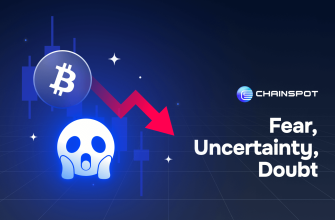- 1. What BTCD Actually Measures Today (2025–2026 Edition)
- 1.1. Stablecoins now distort BTCD structurally
- 1.2. L2 ecosystems inflate ETH sector dominance
- 1.3. RWAs and AI tokens created new liquidity sinks
- 1.4. Bitcoin ETFs changed dominance cycles forever
- 1.5. Meaning of BTCD today
- 2. The Four Structural BTCD Regimes of the Modern Market
- 2.1. Regime A — Institutional Accumulation (High BTCD Drift Upwards)
- 2.2. Regime B — Bitcoin Expansion (Dominance Breakout Phase)
- 2.3. Regime C — Altcoin Expansion (Rare, Short, Violent)
- 2.4. Regime D — Compression (BTCD Goes Flat)
- 3. How to Actually Read BTCD Today (Modern Technical Framework)
- 3.1. Macro Levels for the 2024–2026 Structure
- 3.2. Why BTCD rejects the “old lower bound”
- 3.3. BTCD respects structure much more cleanly today
- 4. BTCD + BTC Price = The Core Rotation Engine (2025–2026 Edition)
- 4.1. Scenario 1 — BTCD ↑ + BTC ↑ → Institutional Bull Phase
- 4.2. Scenario 2 — BTCD ↑ + BTC ↓ → Liquidation Shock
- 4.3. Scenario 3 — BTCD ↓ + BTC ↑ → Modern Altseason
- 4.4. Scenario 4 — BTCD ↓ + BTC ↓ → True Bear Phase
- 5. BTCD + ETH/BTC = The Modern Dual Compass
- Interpretation matrix:
- 6. BTCD During Modern Liquidations: The New Behavior
- 6.1. Altcoins carry 3–12× more leverage than BTC
- 6.2. On-chain perps accelerate dominance spikes
- 6.3. BTCD the moment perp OI collapses
- 7. Advanced BTCD Chart Patterns That Work in 2025–2026
- 7.1. Slope Compression Breakouts
- 7.2. Mid-Range Sweep → Reversal
- 7.3. Double Top near 62–64%
- 7.4. Multi-Month Reaccumulation Block
- 8. How To Trade Using BTCD Today (Practical, Modern Playbook)
- 8.1. When BTCD breaks above 58%
- 8.2. When BTCD breaks below 52%
- 8.3. When BTCD falls below 50%
- 8.4. When BTCD reaches 60–62%
- 9. Cycle Forecasting with BTCD (Late-2025 → 2026 Outlook)
- 9.1. BTC dominance is structurally higher
- 9.2. Altseasons will be shorter & sharper
- 9.3. ETH remains the key rotation trigger
- 9.4. BTCD unlikely to revisit 40–45%
- 10. Final Summary: Why BTCD Still Matters in 2026
- CALLS TO ACTION
- 👉 Swap, bridge & rotate across chains instantly (cashback + referrals):
- 👉 Trade BTC, perps, indices & alt rotations on Hyperliquid:
The crypto market of late-2025 looks nothing like the ecosystem from 2017, 2021, or even 2023. The role of Bitcoin has changed. Liquidity has changed. Derivatives structure has changed. Stablecoin supply has exploded. L2 ecosystems are now bigger than entire L1s. AI-tokens, RWAs, perp DEXs, and restaking products created entire new liquidity buckets. And yet — with all the structural evolution — one indicator remained the most reliable macro compass in crypto:
BTC Dominance (BTCD).
The key difference?
BTCD behaves completely differently today than in previous cycles.
If you analyze it using 2021 logic, you will get obliterated.
This guide is an up-to-date, professional-grade, end-of-2025 / entering-2026 playbook on how to read, trade, and exploit BTCD as a market-wide technical indicator.
Everything here is current, cycle-accurate, and grounded in the actual conditions traders face today.
We’ll cover:
-
BTCD’s new role in the post-ETF institutional cycle
-
How stablecoin supply, RWAs, and L2 ecosystems distort BTCD
-
Why BTCD volatility in 2025–2026 is structurally lower
-
How altcoin seasons look now, not in 2021
-
BTCD trend regimes unique to the modern market
-
Advanced chart patterns that still work
-
Divergences that matter (and the ones that died)
-
BTCD during liquidation cascades in modern perp markets
-
Cycle timing for altcoins using dominance rotation
-
How traders combine BTCD + ETHBTC + TOTAL3 for precision
-
How to position for 2026 macro rotations
This is not a recycled textbook.
This is the real, modern, professional BTCD framework.
1. What BTCD Actually Measures Today (2025–2026 Edition)
Historically, BTCD was:
“Bitcoin market cap divided by total crypto market cap.”
But the meaning of BTCD changed drastically.
1.1. Stablecoins now distort BTCD structurally
Stablecoins accounted for under 10% of total market cap in 2021.
By late-2025, stablecoins routinely hover between 20–28%.
This means:
-
BTCD can drop without any altcoin rally
-
stablecoin issuance pushes dominance down
-
stablecoin redemptions push dominance up
So if you see BTCD move, you MUST check stables.
1.2. L2 ecosystems inflate ETH sector dominance
ETH’s “ecosystem value” is now split between:
-
L2 tokens
-
L3 appchains
-
rollup-native perps
-
restaking derivatives (LRTs)
-
liquid staking (LSTs)
This spreads liquidity across 30–60 tokens instead of 3–4.
The result?
ETH ecosystem weakness often misleads BTCD signals.
1.3. RWAs and AI tokens created new liquidity sinks
These buckets attract non-crypto-native capital, especially RWAs.
This can lower BTCD without strengthening traditional altcoins.
1.4. Bitcoin ETFs changed dominance cycles forever
Since January 2024, BTC flows are institutional:
-
pension funds
-
sovereign wealth funds
-
asset managers
-
risk-parity quant desks
Their flows:
-
stabilize BTC
-
reduce volatility
-
keep dominance structurally high
This is why dominance “feels sticky” above 52–58% and doesn’t collapse like in old cycles.
1.5. Meaning of BTCD today
BTCD no longer measures:
-
“altcoin hype vs Bitcoin hype”
It measures:
risk-on vs risk-off capital distribution inside a multi-layered crypto economy where Bitcoin is the institutional base asset.
When BTCD rises → institutional inflow.
When BTCD falls → speculative cycle revival.
2. The Four Structural BTCD Regimes of the Modern Market
These regimes reflect the 2024–2026 liquidity structure.
2.1. Regime A — Institutional Accumulation (High BTCD Drift Upwards)
Characteristics:
-
BTC ETFs experience steady inflows
-
altcoins stagnate but don’t collapse
-
ETH/BTC declines slow but steady
-
midcaps lose volatility
-
stables increase
-
L1 narratives die quickly
This is a quiet uptrend in BTCD.
No fireworks — but altcoins suffocate.
You’re here when:
-
BTC is grinding but alts stay flat
-
dominance rises without violent candles
-
alt L1 narratives fail repeatedly
-
stablecoin dominance rises too
This was typical in mid-2024 → mid-2025.
2.2. Regime B — Bitcoin Expansion (Dominance Breakout Phase)
This is when dominance EXPLODES.
Characteristics:
-
BTC rallies violently
-
ETH loses ground
-
altcoins bleed vs BTC
-
perp funding on BTC spikes
-
liquidations cluster on alts
-
narrative rotation dies instantly
This is BTC-only season.
You get this when:
-
macro triggers rotation into BTC
-
high timeframe BTC breakout
-
ETF inflows spike
-
fear flows from alts → BTC
Dominance breakout zones (modern):
-
52% → small BTC impulse
-
56% → full BTC-led run
-
60% → institutional megacycle
2.3. Regime C — Altcoin Expansion (Rare, Short, Violent)
Modern altseasons are NOT like 2021.
They are shorter, sharper, and more selective.
Key signatures:
-
dominance falls 2–5% rapidly
-
ETH/BTC spikes aggressively
-
TOTAL3 gains outpace BTC
-
liquidity shifts from ETFs to speculative perps
-
midcaps outperform majors
-
meme risk returns temporarily
This phase lasts weeks, not months.
It usually begins after:
-
BTC consolidates after a strong run
-
funding turns neutral
-
ETH shows relative strength
-
stablecoins flow from CEX → DEX
This happened in pockets during late-2025 Q3, as small alt rotations emerged during BTC pauses.
2.4. Regime D — Compression (BTCD Goes Flat)
The market enters maximum chop:
-
BTC ranges
-
ETH ranges
-
altcoins bleed slowly
-
L2 activity drops
-
speculative volume dries
-
dominance moves 0.1–0.3% per day
This is typically pre-breakout “equilibrium” where analysts fight over invalid signals.
It ends suddenly with:
-
a Bitcoin impulse
or -
a liquidity injection into alts
3. How to Actually Read BTCD Today (Modern Technical Framework)
Forget 2021.
BTCD TA evolved.
3.1. Macro Levels for the 2024–2026 Structure
-
54% → mid-range equilibrium
-
58% → BTC trend control
-
60–62% → institutional supremacy
-
65%+ → altcoin extinction zone
-
48–50% → speculative expansion territory
-
45% → altseason macro trigger
-
40–42% → mania zone (almost unreachable today)
3.2. Why BTCD rejects the “old lower bound”
People still say:
“BTCD will eventually go back to 30–40%”
Wrong.
The structure of the market changed:
-
stablecoins expanding
-
ETH fragmented across L2s
-
alt L1s dead or irrelevant
-
Bitcoin now institutional
BTCD cannot structurally revisit old lows unless:
-
alt L1s regain relevance (unlikely)
-
stablecoin share collapses
-
Bitcoin ETF inflows stop completely
As of late-2025 → none of this is happening.
3.3. BTCD respects structure much more cleanly today
Because institutional flows are smoother, BTCD has:
-
less noise
-
more trend consistency
-
clearer breakout signals
-
more predictable support/resistance behavior
4. BTCD + BTC Price = The Core Rotation Engine (2025–2026 Edition)
This “two-axis” model is the only valid modern framework.
4.1. Scenario 1 — BTCD ↑ + BTC ↑ → Institutional Bull Phase
Interpretation:
-
Bitcoin absorbing inflows
-
altcoins lag
-
liquidity consolidates
-
risk-off for alts
-
safer positioning
This is the most common pattern of 2024–2025.
4.2. Scenario 2 — BTCD ↑ + BTC ↓ → Liquidation Shock
Interpretation:
-
altcoins nuking
-
BTC falling slower
-
risk collapse
-
stablecoins rising
-
perps de-leveraging
Velocity of liquidation bursts is much higher now due to on-chain perps.
4.3. Scenario 3 — BTCD ↓ + BTC ↑ → Modern Altseason
This is today’s altseason signature:
-
ETHBTC spikes
-
L2 perps rotate
-
meme flows revive
-
midcaps lead
-
BTC cools
-
flows from BTC → ETH → L2 → midcaps
Duration: 2–6 weeks max.
4.4. Scenario 4 — BTCD ↓ + BTC ↓ → True Bear Phase
Both falling = horror.
Capital flees the market entirely.
5. BTCD + ETH/BTC = The Modern Dual Compass
ETH/BTC is crucial because ETH now acts as a “risk bridge” between BTC and alts.
Interpretation matrix:
| BTCD | ETH/BTC | Meaning |
|---|---|---|
| ↑ | ↓ | BTC supremacy (bad for alts) |
| ↑ | ↑ | ETH as defensive play |
| ↓ | ↑ | Altseason ignition |
| ↓ | ↓ | market-wide bleed |
This matrix was highly reliable in 2025.
6. BTCD During Modern Liquidations: The New Behavior
BTC perps and alt perps behave VERY differently now.
6.1. Altcoins carry 3–12× more leverage than BTC
This means:
-
altcoins lead liquidation cascades
-
BTCD spikes hard during alt capitulations
-
BTC is “less leveraged” and drops slower
6.2. On-chain perps accelerate dominance spikes
Hyperliquid, Aevo, Drift, Vertex, etc. all contribute to:
-
faster cascading
-
transparent liquidation clusters
-
immediate reaction in dominance
BTCD volatility is now tied directly to perp open interest cycles.
6.3. BTCD the moment perp OI collapses
If total perp OI drops 15–30% in hours, you’ll often see:
-
BTC drops moderately
-
altcoins collapse violently
-
dominance spikes 1–3% in a day
These events are trend-defining.
7. Advanced BTCD Chart Patterns That Work in 2025–2026
7.1. Slope Compression Breakouts
When BTCD compresses inside a narrowing channel for weeks → explosive breakout.
This is the most reliable modern pattern.
7.2. Mid-Range Sweep → Reversal
Dominance sweeps 56–58% and rejects → altseason micro-cycle begins.
7.3. Double Top near 62–64%
If BTCD fails twice at these levels → ETH rotation ahead.
7.4. Multi-Month Reaccumulation Block
This often forms before major BTC uptrends.
Very common in 2024–2025.
8. How To Trade Using BTCD Today (Practical, Modern Playbook)
8.1. When BTCD breaks above 58%
→ Rotate into BTC
→ Avoid alts
→ Avoid ETH perps
→ Expect trending BTC structure
8.2. When BTCD breaks below 52%
→ Begin alt accumulation
→ Increase exposure to ETH
→ Look for narrative rotations
8.3. When BTCD falls below 50%
→ Full altseason
→ Best environment for risk
→ BTC consolidated and cooled
8.4. When BTCD reaches 60–62%
→ Expect rotations soon
→ ETHBTC bottoming is likely
→ Don’t short BTC, don’t long alts just yet
9. Cycle Forecasting with BTCD (Late-2025 → 2026 Outlook)
9.1. BTC dominance is structurally higher
Due to:
-
ETF flows
-
institutional access
-
maturing derivatives
-
altcoin fatigue
-
regulatory favorability for BTC
This keeps BTCD structurally elevated.
9.2. Altseasons will be shorter & sharper
Because:
-
liquidity is fragmented
-
memecoins cycle faster
-
L2s cannibalize each other
-
AI tokens rotate week-to-week
-
ETF flows stabilize BTC
Expect micro altseasons, not mega-cycles.
9.3. ETH remains the key rotation trigger
Likely:
-
ETH/BTC bottom sometime early-to-mid 2026
-
BTCD pulls back 3–6%
-
altseason follows
9.4. BTCD unlikely to revisit 40–45%
Unless:
-
stables collapse
-
alt L1s revive
-
ETH ecosystem unifies
-
BTC ETFs reverse inflows
No signs of these yet.
10. Final Summary: Why BTCD Still Matters in 2026
BTCD today measures:
-
institutional liquidity flows
-
altcoin risk tolerance
-
rotation timing
-
stablecoin issuance effects
-
relative leverage in perps
-
market-wide liquidity concentration
It remains:
-
predictable
-
clean
-
highly technical
-
cycle-defining
Understanding BTCD is understanding crypto’s liquidity engine.
Miss BTCD → miss the entire cycle.
Master BTCD → front-run rotations consistently.












